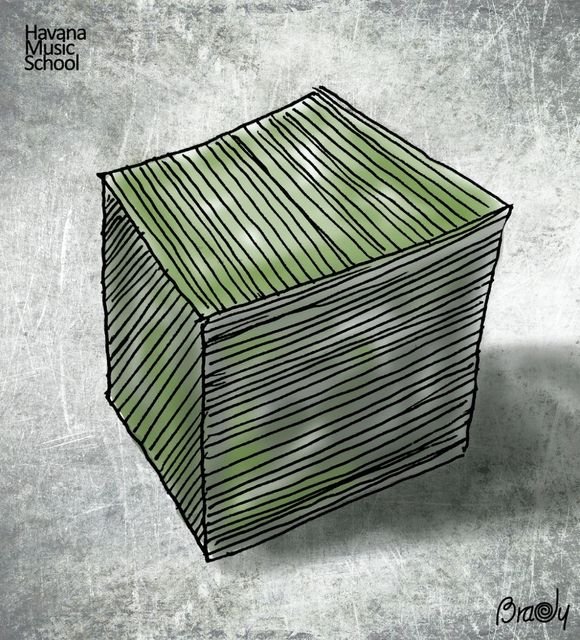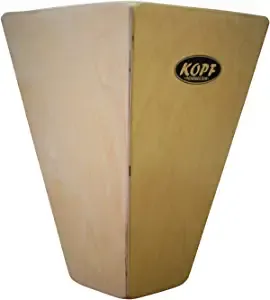 The "Mambo", the "Aupón" or main voice and the choristers have a lot of analogy with salsa or son in the metric and rhythmic questions since everything is due to the clave as a rhythmic conductive thread and the sequence of question and answer generated by "Coro y Guía". This play of voices and repetitions has the function of generating the cadence that allows the approach (Trance) of the spirits over those present.
The "Mambo", the "Aupón" or main voice and the choristers have a lot of analogy with salsa or son in the metric and rhythmic questions since everything is due to the clave as a rhythmic conductive thread and the sequence of question and answer generated by "Coro y Guía". This play of voices and repetitions has the function of generating the cadence that allows the approach (Trance) of the spirits over those present.
 The cajon is part of the family of idiophone instruments since it has its own sound and uses its body as a resonance box. Within this family it is in the subgroup of the percussive idiophones.
The cajon is part of the family of idiophone instruments since it has its own sound and uses its body as a resonance box. Within this family it is in the subgroup of the percussive idiophones.
The cajon has suffered many modifications due to the evolution of the instrument and the source from which it comes from. There are variants with different shapes: the rectangular parallelepiped and the inverted straight pyramid. In its evolution the materials have also varied, such as cedar wood, majagua, pine, or playwood planks. They are made with a clean hand and their motivations are varied, from gratitude for a favor granted to the express request of an "empungo". They can be painted with brightly colored oil and the name of the group is placed on them. They are also decorated with signatures (Patipembas) referring to the house to which the box belongs or to the "empungo" to which it belongs, depending on its religious function or the owner's taste. There are occasions in which they are varnished to protect the wood and leaving them with their natural color.
It is necessary to note that before performing a "batuque" or "cajón", in the house / temple it is necessary to perform several previous ceremonies in order to prepare the site for the celebration, such as:
- The raising of the spiritual vault.
- Spiritual Mass.
- Covering the mirrors.
- Washing of the house.
- Preparation of the eggun corner.
 The cajon chants are divided into 3 types:
The cajon chants are divided into 3 types:
Litany: It is sung as an entrance at the moment of beginning the ceremony to warn all the "empungos" that in that place and at that moment a cajon is being given and that there is an open threshold for them to manifest, it is an invitation to the different deities of the Congo pantheon to participate in the celebration.
Celebration: These are praises specifically directed to a specific empungo so that he/she makes his/her manifestation and takes possession of one of the mediums present that has the necessary conditions for that deity to descend in him/her.
Lamento: It is sung when there is a mourning in the temple or house as a result of a death to give knowledge to that empungo that his son (the deceased) is no longer in this plane. It is also used as a farewell at the time of closing the cajon ceremony to notify the empungo that the cajon celebration is about to end.
One of the reasons why this type of celebration has remained in force is because of the communion that several popular musicians practicing different Afro-Cuban religions have had and the importance that the dead, eggun, nfumbes of the same have had for the preservation of all these drum toques diversified by geography but unified by culture and faith.
Salam Malekum
Hola Esteban
Estaba revisando tu contenido y es muy interesante. Siento, sin embargo, que la forma en que lo has estado presentando, hace que se pierda.
Si quieres y tienes la posibilidad de usar Discord, me gustaría que habláramos por esa vía para ayudarte a encaminar tus publicaciones.
Te dejo la invitación al servidor de @la-colmena, allí me puedes ubicar como @Ylich#1556
https://discord.gg/SYwngna
¡Éxitos!